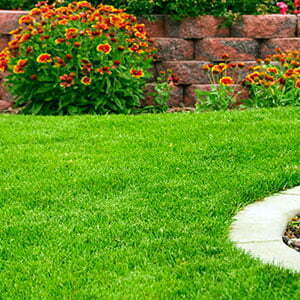Is it possible to have a gorgeous garden in the Phoenix area but still conserve water? Absolutely. With a water-smart landscaping plan, you can ease the strain on local water supplies, reduce runoff and lighten up your water bills without sacrificing curb appeal. Get your plan rolling with this easy guide from Sprinkler Doctors, your on-call experts for sprinkler repair in Mesa, AZ.
1. Consider Your Canvas
Start off by identifying your yard’s features, strengths and weaknesses. Examine your topography:
- Open areas: Great for full sun plants, open areas are especially susceptible to water loss from evaporation and drying winds. Mulch can reduce evaporation. Installing or taking advantage of existing windbreaks, like screening trees or fencing, will help with wind.
- Slopes: Slopes give you an excellent opportunity for rain water collection, but erosion can be a problem. Erosion-control plantings, retaining walls and cutting in tiers for planting can help prevent water and fertilizer loss.
- Soil: Some yards have different soil types in different areas. Make sure you know what the soil is like throughout your yard. You can have soil tests done to help out.
Next, take note of existing landscaping. Trees and shrubs provide water-saving shade and windscreening. They may also have their own water needs. Hardscaping, like fencing, walkways and patios, can similarly change your plans.
 2. Choose and Group Plantings
2. Choose and Group Plantings
Grouping plants with similar water, light and soil needs together is a basic tenet of water-smart landscaping. It allows you to plan your irrigation well and water precisely. In addition to saving water, zoning can make it easier to pinpoint problem areas when you need sprinkler repair from a Mesa, AZ specialist.
Narrow your plant search to low-water, drought-tolerant varieties. The Arizona Department of Water Resources maintains lists of low water use plants by region. Your local nursery will be happy to lend a hand finding more options. Native plantings, which evolved to thrive in the local climate, are also an excellent choice.
You don’t need a ’emerald lawn’ to have a stunning yard. Lush gardens, entertaining areas, meadow-style plantings and even vegetable gardens look luxurious and lovely. If you do want grass, make sure to choose drought-tolerant varieties suited to your sun exposure and soil type. If your grassy area doesn’t need to tolerate regular foot traffic, you can use alternative ground covers more suited to the Phoenix climate.
4. Savvy Irritation Tips from Local Experts in Sprinkler Repair for Mesa, AZ
Overwatering, poor timing and inefficient irrigation are the biggest water wasters in any yard. Even the most water-efficient plan won’t save water if you don’t adjust your irrigation to match. Make sure each ‘zone’ of your plan gets only as much water as it needs. Matching drip and spray sprinkler heads to the right beds and adjusting your schedule as the seasons change will further increase efficiency. A professional can help you plan the most efficient system.
Rainwater collection systems are an excellent method for getting the most out of monsoon season. Water can be collected off of hillsides, directly from your gutters, out of ditches and even off the street. If you ever have problems with your collection system, narrow your search for sprinkler repair in Mesa, AZ to companies that specialize in irrigation. Rainwater systems are specialized equipment that need expert attention.
5. Enrich Your Soil
You may think of desert soil as dry and lifeless, but it’s full of micronutrients and minerals. You can take advantage of those nutrients and maintain lush plantings by combining your soil with rich organic matter. Any new planting area should have the top 6 to 18 inches of soil mixed with compost. The deeper the mix, the better. Existing areas can be aerated and fertilized twice a year with a 1/4 inch of compost to enrich the soil over time. After two or three years, you can cut down to fertilizing just once a year.
6. Use Mulch
The constant blaze of the sun steals a lot of water from our gardens. Using mulch, which shades the soil and prevents evaporation, is another important part of water-smart landscaping. The term “mulch” doesn’t just apply to wood chips. Any ground cover counts.
Gravel, ground cover plantings, cocoa husks, wood shavings and even straw are all effective mulches. Each has its pros and cons, and different mulches can also help you define the “feel” of your garden. If you choose wood mulch, make sure you apply it properly. Reapply about every two years, and don’t mound it up around trees and shrubs.
Want to learn more? Check your local garden centers for workshops in xeriscaping and landscape water conservation. When you’re ready to install your finished design, give Sprinkler Doctors a call. We’ll make sure your irrigation system is a perfect match to your needs

